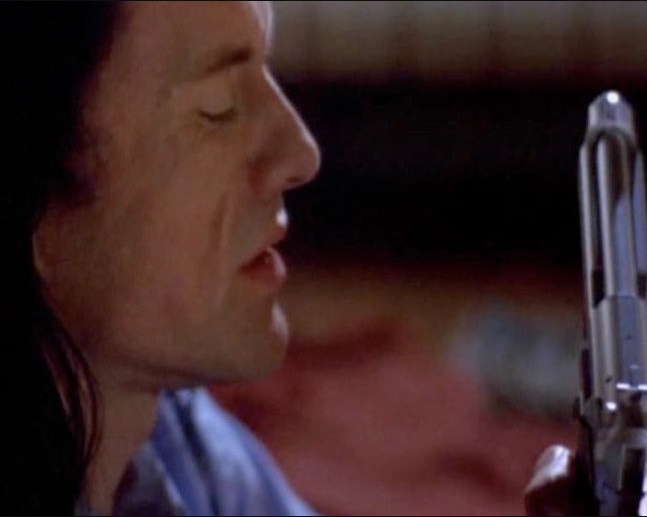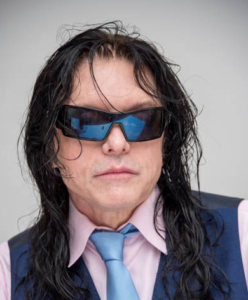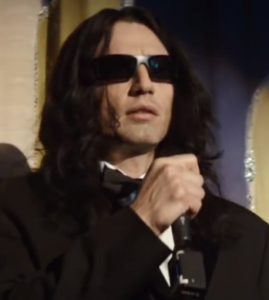Tommy Wiseau’s The Room is arguably the best worst movie ever made. Matching endless ambition with minimal talent, The Room is one of those rare pictures where every decision made is wrong, but it plunges ahead, convinced of its own brilliance. Perhaps the only movie that comes close is Menahem Golan’s The Apple. (If you haven’t seen The Apple, you can stream it here. It’s a sci-fi dystopia where the world is in thrall to a televised talent contest, with “talent” being taken very loosely. It’s all run by the evil Mr. Boogalew, played with lip-smacking sleaziness by Vladek Sheybal, probably best known for playing super-villain—and Vladimir Putin role model—Kronsteen in From Russia, With Love. Boogalew is a combination dictator/A&R executive, who Sheybal plays like a merger of Lenin and Ahmet Ertegun. The movie ends with God coming down to earth in a white Rolls Royce. All this, and dance scenes, choreographed by future “American Idol” creator Nigel Lythgoe.)
But alongside everything else that’s wrong with The Room, it also features the most overwrought, attenuated, nonsensical death scenes ever seen. Wiseau, as Johnny, believes he has been betrayed by everyone around him, and starts flailing around his house. It’s a mantel-clearing, furniture-flinging, mirror-breaking, TV-tossing, dress-rending tantrum. Imagine Orson Welles tantrum from Citizen Kane, but if Kane shopped at IKEA. Finally, he comes across a gun, puts it too his mouth, and falls back, in slow motion, dropping the gun (which also falls in slo-mo).
 That scene is recreated in James Franco’s The Disaster Artist, his gently comic film of how The Room got made and became a cult favorite. Franco, who directs and plays Wiseau, clearly has great affection for him—you almost have to love someone to imitate them with that much care and precision—but it’s the kind of indulgent love you have for a developmentally disabled cousin, or a senior dog. Franco inhabits Wiseau, nailing his distinctive cadences and indistinct accent (he claims to be from New Orleans), and slightly sinister looks (on more than one occasion, Tommy is told he’d have a better shot if he’d go out for the heavy, but he insists he’s a hero), but he doesn’t go deeper. You know little more about Wiseau when you leave The Disaster Artist as you did going in. The questions of where Tommy is from, his age, and the source of the millions of dollars that financed The Room remain unanswered.
That scene is recreated in James Franco’s The Disaster Artist, his gently comic film of how The Room got made and became a cult favorite. Franco, who directs and plays Wiseau, clearly has great affection for him—you almost have to love someone to imitate them with that much care and precision—but it’s the kind of indulgent love you have for a developmentally disabled cousin, or a senior dog. Franco inhabits Wiseau, nailing his distinctive cadences and indistinct accent (he claims to be from New Orleans), and slightly sinister looks (on more than one occasion, Tommy is told he’d have a better shot if he’d go out for the heavy, but he insists he’s a hero), but he doesn’t go deeper. You know little more about Wiseau when you leave The Disaster Artist as you did going in. The questions of where Tommy is from, his age, and the source of the millions of dollars that financed The Room remain unanswered.


But the movie is great fun. From Tommy’s introduction—playing Stanley Kowalski having what appears to be an epileptic seizure in an acting class—to acting Johnny’s death scene, Franco’s Wiseau is fearless, a man that doesn’t care what you think of him. He manages to convince Greg Sestero, a young actor, played by Dave Franco as an amiable cipher (Sestero’s book is the basis for the screenplay by Scott Neustadter and Michael H. Weber). The two brothers fall into a wonderful rhythm in their scenes together, Dave Franco’s solid, generous performance providing a calm center as Tommy becomes more and more possessive and paranoid. Seth Rogan is perfectly deadpan as Sandy Schklair, The Room’s credulous script supervisor.
In the end, the appeal of Wiseau’s story for Franco is obvious—like so many other people who come to LA, Wiseau was a dreamer. Unlike most other, he went out and made that dream happen, not letting mere details like lack of any talent stand in the way. And for all that, he was still sharp enough that, when The Room‘s “Springtime For Hitler” moment occurs, he’s willing to go with it and tell everyone he always intended to make a comedy. The Room ended up a success. And so is The Disaster Artist.

Leave a Reply